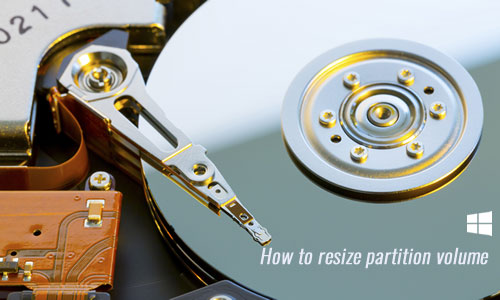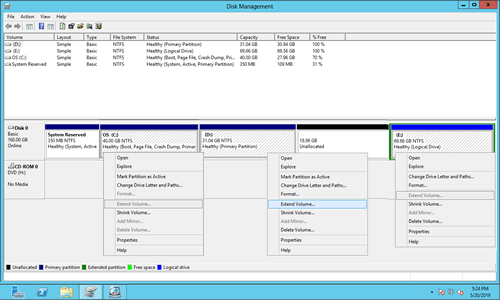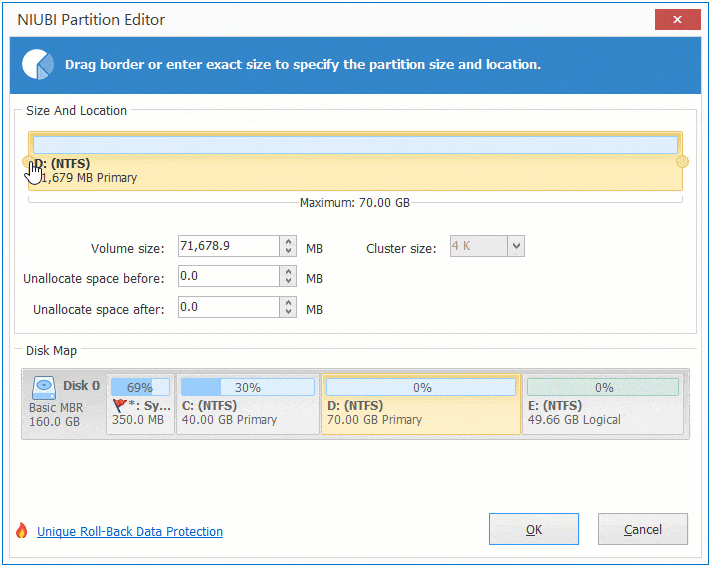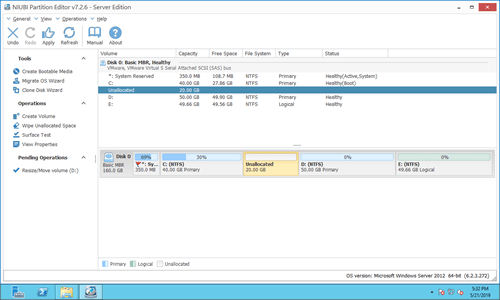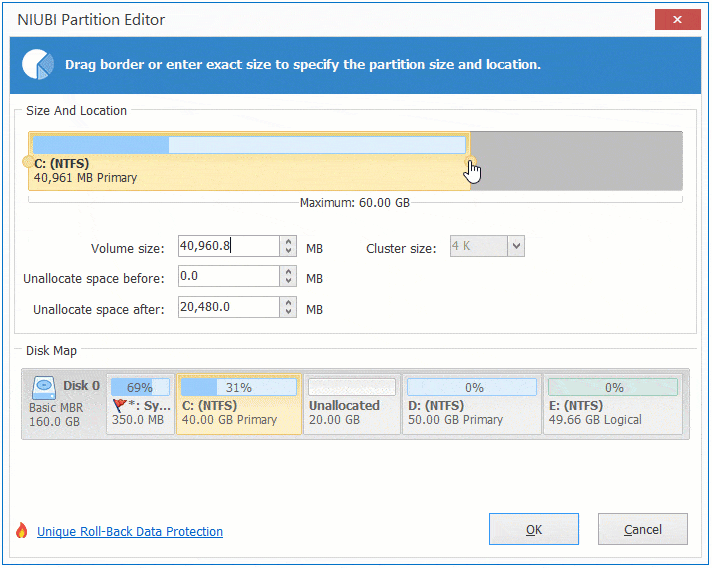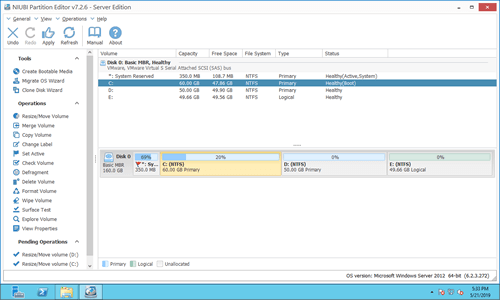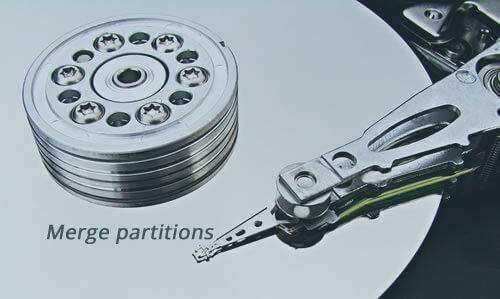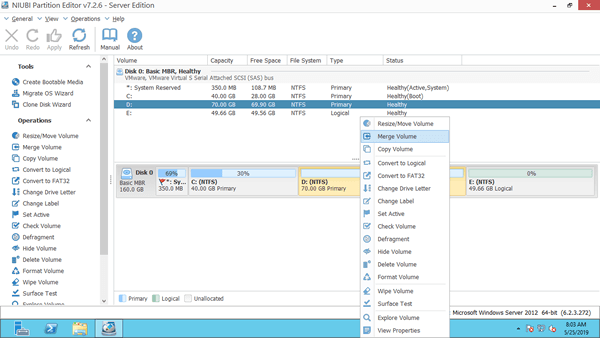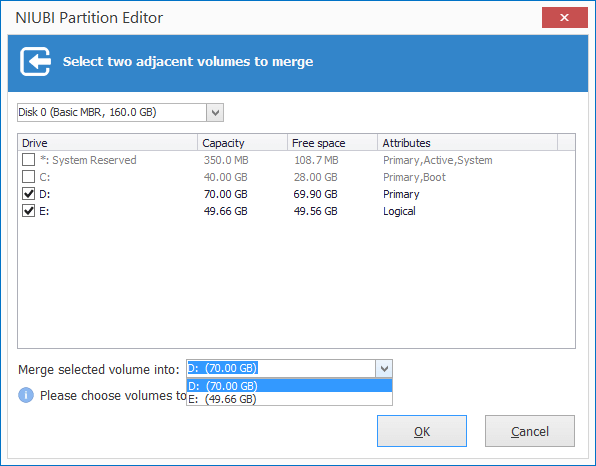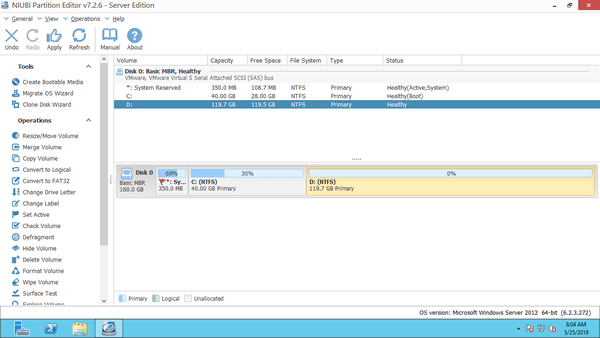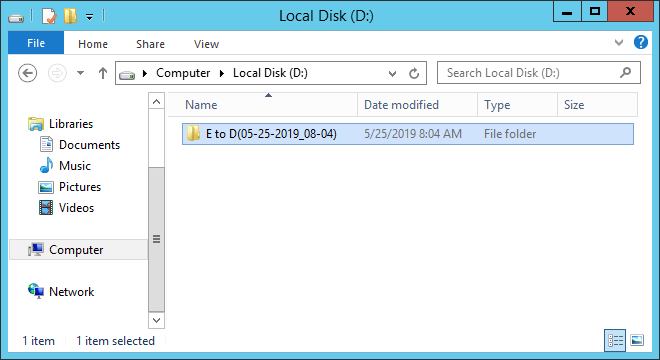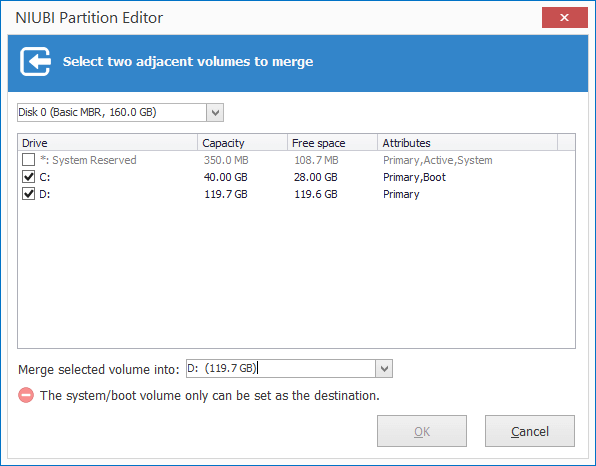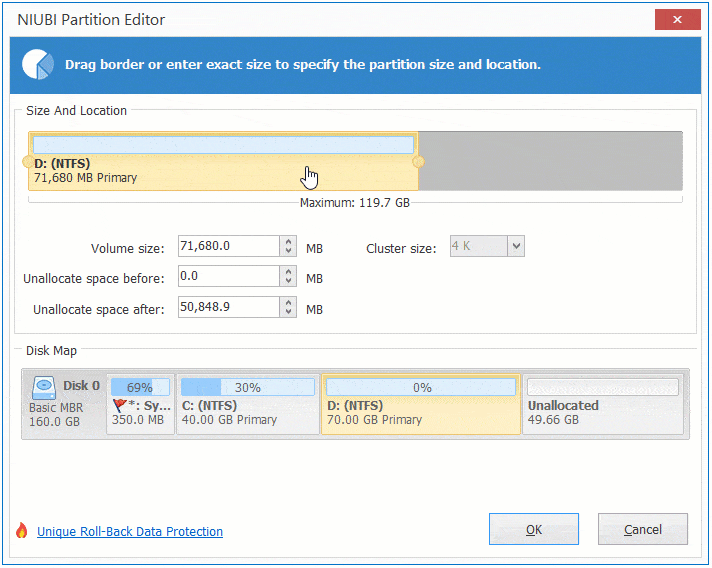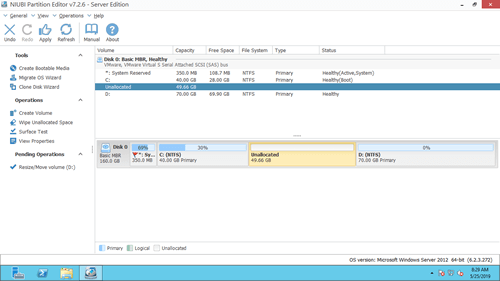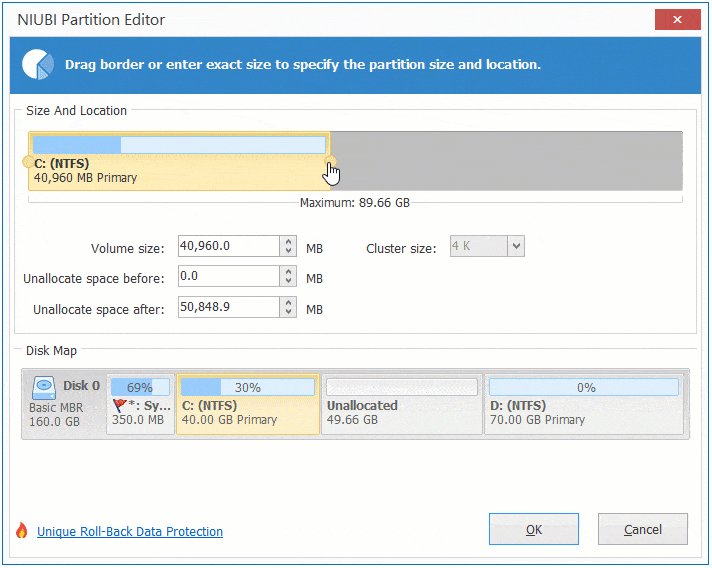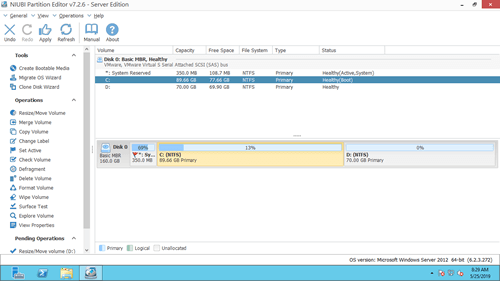- How to resize partition in Windows Server 2012
- 1. Which tool to resize Server 2012 partition
- ☞ Why there’s risk when resizing partition in Windows 2012 Server
- 2. How to resize partition in Windows Server 2012 R2
- 3. Video guide to resize volume in Server 2012 R2
- Merge partition volume in Windows Server 2012
- 1. Merge partitions in Server 2012 Disk Management
- 2. How to combine drive D with C or E (contiguous)
- 3. How to merge nonadjacent partitions C and E
- 4. Resize Server 2012 partitions instead of merging
How to resize partition in Windows Server 2012
by Andy, Updated on: December 4, 2020
This article introduces detailed steps how to resize partition volume in Windows Server 2012 R2 without losing data.
The same with Windows PC, hard drive partition of Windows Server runs out of space after a period of time, especially to system partition C and the drive for exchange, database and backup. Comparing with other volumes, it is complicated to system C: drive, no matter the disk is physical for RAID array.
With right tool you can change partition size without wasting a long time to recreate partitions and restore everything from backup. However, it is still not an easy task for many server administrators. Many people ask the similar questions such as: is it safe to resize Server 2012 partition, how to resize hard drive partition fast and easily.
Don’t worry, with reliable tool and following the right steps, it is easy and safe to resize partition in Windows Server 2012 (R2). In this article, I’ll show you how to do this with detailed steps.
1. Which tool to resize Server 2012 partition
There are two kinds of tools to help resize volume for Windows 2012 server: Windows built-in Disk Management and 3rd-party partition software.
Advantage of Windows Disk Management:
- It is safe to resize volume in most cases.
- It is very fast to shrink and extend partition, because the start position of this partition won’t be changed.
- Shrink and extend partition on the fly without rebooting.
Disadvantage of Disk Management:
- Only NTFS partitions can be shrunk and extended.
- Unallocated space can only be made on the left while shrinking a partition.
- Sometimes you cannot shrink partition with Disk Management.
- Only the partition with adjacent Unallocated space on the right can be extended, Extend Volume is disabled for all other partitions.
- Operations can’t be undone, disk partitions will be modified instantly even if you did something wrong.
- Lack of many disk partition management ability.
How to resize partition in Windows Server 2012 Disk Management:
- Right click a NTFS partition and select «Shrink Volume», click Shrink button to shrink with default maximum available space, or input a value by yourself and click Shrink.
- Before extending a partition, you must delete the contiguous volume on the right side. After that, right click this partition and select «Extend Volume», then simply click Next in pop-up Extend Volume Wizard.
If you just want to decrease a NTFS partition to create more, you may try Windows Disk Management. If you want to extend a partition by shrinking another one, Disk Management cannot help you. Because the Unallocated space that shrunk from D: drive is non adjacent to C drive and is on the left side of another E: drive.
Third party software can made Unallocated space on either side when shrinking partition, and merge Unallocated space to either contiguous or any non adjacent partition on the same disk. However, you’d better back up first and run reliable software, because there is potential system damage and data loss risk while resizing partition.
☞ Why there’s risk when resizing partition in Windows 2012 Server
To adjust size of partition in Windows Server 2012 (R2), for example shrinking D to extend C:
- The start and end position as well as other parameters of drive C and D must be modified correctly.
- All files in drive D should be moved to new locations, all parameters of these files should be changed, too.
- System boot related files must be updated.
Any slight error could cause damage. Many people feedback issue that caused by unreliable partitioning software, for example: system boot failure with error message or black screen. Partition changed to be RAW and Windows ask to reformat it.
Better than other tools, NIUBI Partition Editor has innovative technologies to protect system and data.
- Virtual Mode — all operations you do will be listed as pending for preview, real disk partitions won’t be modified until click Apply to confirm.
- Cancel-at-well — if you applied wrong operations, you can cancel the ongoing unwanted operations without losing data.
- 1 Second Rollback — if encounter any error while resizing partition, it automatically reverts server to original status in a flash.
- Unique file-moving algorithm — move and extend partition 30% to 300% faster, saving much time especially when there are large amount of files.
2. How to resize partition in Windows Server 2012 R2
It is very easy to resize Server 2012 volume with NIUBI Partition Editor, you just need to drag and drop on the disk map.
Download NIUBI Partition Editor, right click a partition such as D: and select «Resize/Move Volume», drag left border towards right in the pop-up window. (Or enter an amount in the box of Unallocated space before)
Then drive D is resized and some Unallocated space is made on the left.
If you drag right border towards left, Unallocated space will be made on the right of D drive.
Right click C: drive and select «Resize/Move Volume» again, drag right border towards right in the pop-up window.
Then this Unallocated space will be extended to C drive.
If you want to extend E: drive, shrink D and make Unallocated space on the right. Then drag left border towards left for E drive.
To avoid wrong operation, NIUBI Partition Editor is designed to work in virtual mode the first time. To change real disk partitions, remember to click Apply on the top left to take effect.
3. Video guide to resize volume in Server 2012 R2
As long as there’s free space on the same disk, you can transfer and add to the partition that you want to expand. Watch the video how to resize partition in Windows Server 2012 R2:
How to extend C drive by resizing other data volumes:
How to extend D drive by resizing C or other volumes:
In some servers, C drive is getting full but there is no other partition, or no available free space in entire disk. In that case, no software can add space to C drive from another separate disk. However, you can copy to a larger disk and resize partition with extra disk space. Follow the steps in the video:
If you want to resize RAID partition or resize virtual parition in VMware/Hyper-V VM, there is no difference. Do not break array or do any operations to raid controller, just follow the steps above.
Besides resizing partition in Windows Server 2012/2016/2019/2003/2008, NIUBI Partition Editor helps you do many other disk partition management operations.
Merge partition volume in Windows Server 2012
by Jordan, Updated on: August 18, 2020
This article introduces how to merge partitions in Windows Server 2012 R2. 3 ways to combine partition C, D, E with Disk Management and partition editor.
Many people need to resize partitions after running Windows 2012 server for several years. By merging a partition to another one, all its disk space will be converted to part of unused space in other partition. It seems to be a good idea when a partition is running out of space. However, you’ll lose one of partitions by merging them together. In this article, I’ll introduce how to merge Server 2012 partitions with native and third party tools. In addition, I’ll show you how to resize partitions instead of merging.
1. Merge partitions in Server 2012 Disk Management
The same with previous version, there is no Merge Volume function in Windows Server 2012 built-in Disk Management tool. If you don’t want to use any third party software, the only way is running another Extend Volume to combine partitions indirectly, but before this, you must delete a partition manually.
How to merge partitions with Windows Server 2012 (r2) Disk Management:
- Press Windows and X on keyboard and click Disk Management from the list.
- Right click D: drive and select Delete Volume.
- Right click C: drive and select Extend Volume.
- Simply click Next till Finish in the pop-up Extend Volume Wizard window.
Remember to transfer all files in D before deleting, if you installed any programs or services to this partition, don’t delete it.
Besides manually transfer files and deleting partition, there are other shortages when merging partitions via Server 2012 Disk Management:
- It can only combine a partition to the left contiguous one, for example merging drive D to C, or combine E into D.
- It cannot merge 2 nonadjacent partitions.
- The destination partition must be formatted with NTFS file system, otherwise, Extend Volume is grayed out even after deleting any other partitions.
- The destination partition and the one that you want to delete must be the same Primary or Logical partition.
2. How to combine drive D with C or E (contiguous)
With third party software, there are no such shortages. In addition, they are much easier to use, you just need to drag and drop on the disk map. Among these software, NIUBI Partition Editor has unique 1-Second Rollback, Virtual Mode and Cancel-at-well technologies to protect system and data.
How to merge partitions in Windows Server 2012 r2 with NIUBI:
Step 1: Download and install it, right click either drive and select Merge Volume.
Step 2: Click the check-box of both contiguous drives, and then select the destination partition in the drop-down list.
Step 3: Click Apply on top left to execute. (All operations before this step work in virtual mode only.)
After partition merging complete, open drive D: in File Explorer and you’ll see a folder named as E to D (date and time), all files in drive E are moved to this folder automatically.
If you want to merge partition D and C in Windows Server 2012, it is similar. However, you can’t select D as destination drive. Because C: drive is where Operating System located, it can’t be removed.
3. How to merge nonadjacent partitions C and E
As I said above, Disk Management cannot combine 2 non-adjacent partitions, because it cannot move position of any drives. Third party software can help you accomplish this task, but you need to transfer files in advance.
How to combine nonadjacent partitions C and E in Windows Server 2012 with NIUBI:
① Right click E: drive and select «Delete Volume».
② Right click D: drive and select «Resize/Move Volume».
③ Drag middle position towards right in the pop-up window to exchange the position of D and Unallocated space.
Then Unallocated space is moved to the left side.
④ Right click C: drive and select «Resize/Move Volume» again, drag right border towards right.
Then Unallocated space is combined into C drive.
4. Resize Server 2012 partitions instead of merging
It is easy to combine partitions in Windows Server 2012, however, there is a disadvantage that one partition will be removed. If you want to extend a volume, it is not suggested to achieve by merging partitions. Instead, you’d better resize partition. That means, shrink a partition to release part of free space, and then move to the partition that you want to expand. In this way, Operating System, program and associated settings, as well as anything else keep the same with before.
Watch the video how to shrink and extend partition in Windows Server 2012:
Besides shrinking, extending and merging partitions in Windows Server 2012/2016/2019 and 2003/2008, NIUBI Partition Editor helps move, copy, convert, defrag, wipe, hide, create, format partition and much more. All types of local/removable hard disks, hardware RAID arrays, VMware and Hyper-V virtual machines are all supported.
